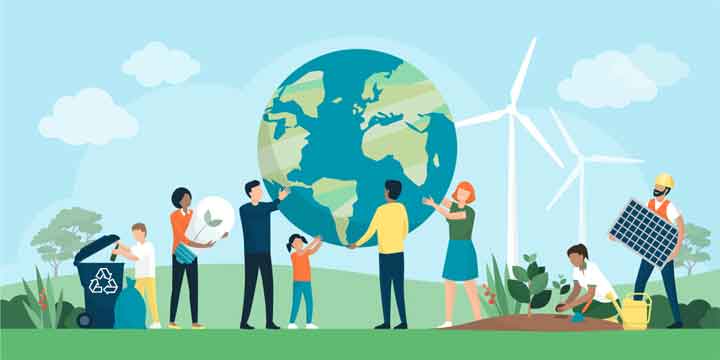Parents constantly have to protect their children from harm and potential dangers. These dangers come in the form of reckless drivers, irresponsible childcare providers, and childhood illness or disease. It is hard enough to handle threats that parents are taught to expect making it extremely difficult to deal with toxic threats that cannot be seen, smelled, or felt.
Children are exposed to more than 20,000 different toxins each day that can be found in most homes. These environmental toxins are extremely dangerous and have been linked to many diseases including Parkinson’s, Alzheimer’s, and even cancer. The constantly developing bodies of young children make them even more susceptible to these toxins than adults, discover more. Studies have shown that children and adults living in the same home have different amounts of toxins in their blood. Children were found to have twice the amount of toxins in their blood streams than adults.

Many parents who are aware of the environmental toxins found in many household chemicals depend on the government to provide some measure of safety. While the Environmental Protection Agency works hard to protect consumer only five of a totally of 80,000 dangerous chemicals used in the United States have been banned. The government wants to be completely sure that a chemical is dangerous and causing health problems before banning it. This might seem like the responsible thing to do but it can be decades before the government determines that enough diseases have been linked to a certain chemical and in that time frame your child might have already been seriously affected. The numbers of children suffering from pediatric cancer, autism, developmental disabilities, asthma, and rheumatoid arthritis have been rising over the years these numbers can be connected to various water, air, and house hold contaminants.
Other countries have decided to take immediate action when illnesses are linked to certain household products and chemicals sold to consumers. The European Union practices what is referred to as the “precautionary principle” meaning that they ban any substance that they believe to be a medical danger. The E.U. does not wait until hundreds of children have developed diseases that can be linked to standard toxins. This approach has led to many dangerous toxins being banned before they harm thousands of children. Corporations have done what they could to slow down or stop this approach which has cost many companies millions but the European Union has firmly stuck to their policy of protecting the populace from potential harm.
There are several chemicals that parents should be careful with and abstain from using whenever an alternative is available. This list only includes the most common, and dangerous toxins currently found in most United States households
- Pesticides- These toxins are used to destroy mold, insects, and weeds. They contain chemicals that have been linked to cancer and children who are exposed to pesticides are 50% more likely to develop leukemia. To avoid exposure purchase organic fruits and vegetables or grow your own produce without using pesticides or insecticides. When eating non-organic foods wash them thoroughly to limit contamination.
- Chlorine- This chemical can harm the acidophilus (good bacteria) found in the intestines. It can also diminish the amount of vitamin E found in the body and irritate the skin. Each year thousands of children are injured in some way by chlorine.
- Mercury- A harmless looking metal that can cause serious damage to the brain, lungs, kidneys, and also negatively affect developing fetuses when pregnant women are exposed. Mercury can be found in certain types of fish and even in compact fluorescent light bulbs.
- Freon- This toxin is often found in cancer patients and is often absorbed from refrigerator leaks. Since children have a greater lung surface area than adults and are closer to the ground where the leaks are found they usually inhale more Freon than adults.
- Phthalates- A chemical that is found in toys, cosmetics, and paints phthalates is also found in shower curtains, teething rings, and food containers since it is used to create PVC (polyvinyl chloride). Check all products that might contain phthalates before purchase and do not microwave food in plastic containers or with plastic wrap if you are unsure about the material it was made with.
- Teflon- PFOA is the chemical used to create Teflon cooking pans and pots. 96% of children fed food cooked using Teflon pots and pans had PFOA in their blood. Try to avoid using Teflon at high heats and only cook in areas with good air circulation.
- Benzopyrenes- These are hydrocarbons that are created by charbroiled food, burned toast, wood smoke, and vehicle exhaust. These chemicals can be ingested when the hydrocarbons are absorbed into food grown near these fumes and the hydrocarbons can damage the human gene that guards against cancer.
- Formaldehyde- Present in nearly all homes and businesses this chemical is found in nail polish, wallpaper, furniture, mattresses, and cleaning products. Formaldehyde insulation was banned in the 1980s but it is still used in the previously mentioned products. It is also used in pressed woods and particleboard furniture.
The above mentioned products are only a few of the dangerous chemicals found in most homes and businesses. While it is hard to stop using these products entirely there are ways to avoid exposing yourself and your children to harm. When alternatives cannot be found use chemicals in well ventilated areas or outdoors when your children are not in the house. If you are forced to use these chemicals around your children or find that your children have been exposed to a spill or accidental usage of a dangerous chemical take them to a doctor as soon as possible.
